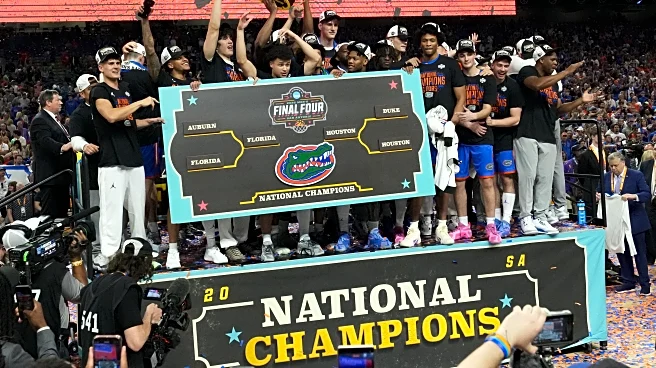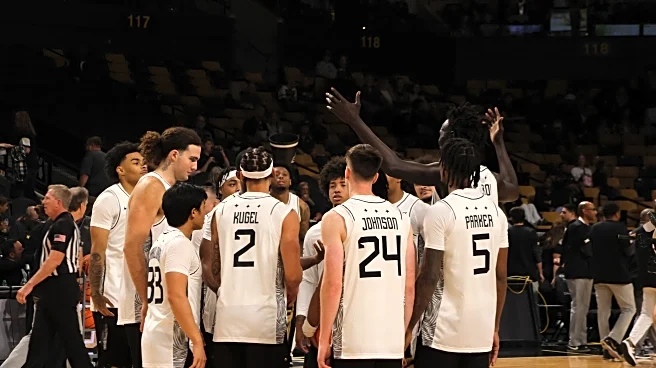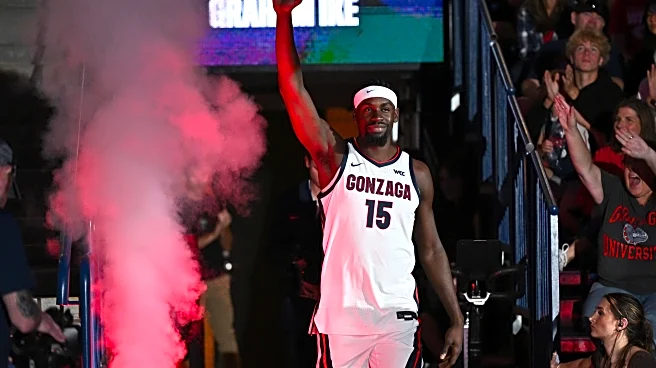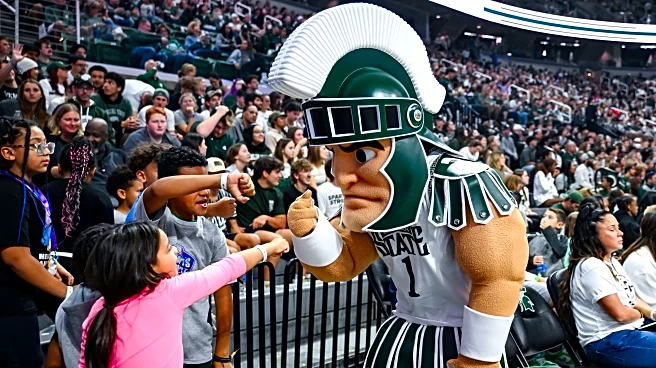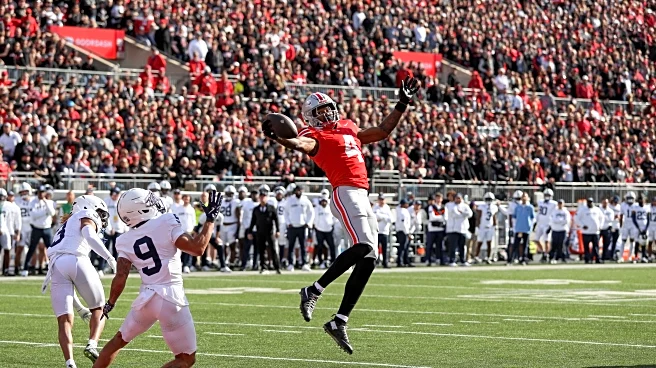What's Happening?
The 2025-26 college basketball season has commenced, and CBS Sports has released its initial Bracketology simulation, projecting the potential seeds for the NCAA Tournament. Duke is positioned as the No. 1 overall seed, with Purdue, Michigan, and St.
John's also securing top seed positions. The reigning national champion, Florida, is projected as a No. 2 seed, while UConn is the highest No. 3 seed. The Southeastern Conference (SEC) is anticipated to lead with 13 teams potentially making the tournament, followed by the Big Ten with 12 teams. The Big 12, ACC, and Big East are also represented, with 8, 5, and 4 teams respectively. The simulation reflects a strong presence of high-major conferences, with no at-large bids projected for teams outside these leagues.
Why It's Important?
This projection underscores the dominance of high-major conferences in college basketball, particularly the SEC, which is expected to have the most teams in the tournament. This could influence recruitment strategies, funding, and media attention towards these conferences. The lack of at-large bids for mid-major conferences like the Mountain West and WCC highlights the challenges these teams face in gaining national recognition and tournament spots. The projections also set expectations for teams and fans, potentially impacting team morale and fan engagement throughout the season.
What's Next?
As the season progresses, teams will aim to improve their standings and secure a spot in the NCAA Tournament. The performance of teams like Oklahoma State, which is projected to make the tournament after a significant roster overhaul, will be closely watched. Additionally, the varying opinions on teams like Ole Miss, which is on the bubble, will be a point of interest as analysts and fans debate their potential tournament inclusion. The dynamics of the season will continue to evolve, with teams striving to meet or exceed these early projections.
Beyond the Headlines
The emphasis on high-major conferences in the Bracketology model may prompt discussions about the fairness and inclusivity of the NCAA Tournament selection process. The potential exclusion of mid-major teams could lead to calls for reform in how tournament bids are allocated. Additionally, the reliance on analytics and projections in shaping expectations highlights the growing role of data in sports management and decision-making.





